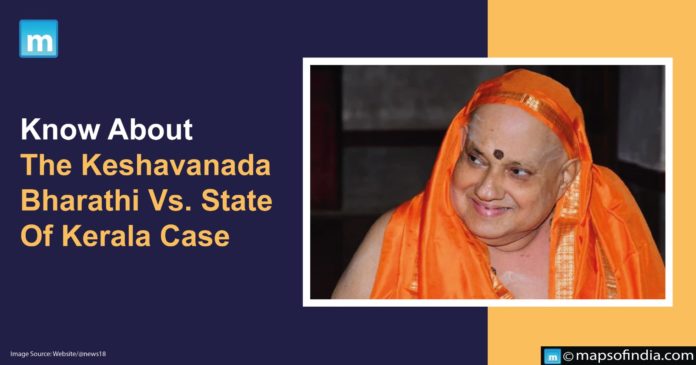Keshavananda Bharathi
Kesavananda Bharati, an Indian Hindu monk, served as the Shankaracharya (head) of Edneer Mutt, a Hindu monastery in the Kasaragod district of Kerala, India. He was born on December 9, 1940, and died on September 6, 2020. He was the petitioner in the Kesavananda Bharati v. State of Kerala.
It contributed to the development of the Indian Constitution’s basic structure. It ensures that the fundamental or basic structure of the Indian Constitution cannot be changed by parliamentary amendment.
Role in Indian constitutional law
In Kesavananda Bharati v. State of Kerala, Kesavananda Bharati filed the lawsuit. The Supreme Court of India significantly ruled in the Kesavananda Bharathi case. The Kerala Land Reforms Act of 1963, as amended in 1969, was the legal framework used by Kesavananda Bharati to challenge the Kerala government’s attempts to seize the Mutt’s property. Together with his legal representative Nani Palkhivala, he claimed that this action infringed on his fundamental rights, most notably his freedom of religion (Article 26), right to property (Article 25), and right to practice his religion as he saw fit.
The Indian Constitution’s basic structure is not changeable. The Supreme Court ruled on March 23, 1973. The fundamental structure of the Indian Constitution has been guaranteed ever since this judgment served as the foundation for the basic structure doctrine.
Keshavanda Bharathi Case
The Fundamental Rights Case is another name for it. The Golaknath v. State of Punjab decision, which held that constitutional amendments made according to Article 368 were subject to fundamental rights review only if they could alter the “basic structure of the Constitution,” was partially upheld by the Court. In addition, the Court upheld the constitutionality of Article 31-C’s first provision, which stated that changes made to implement the Directive Principles that do not alter the “Basic Structure” are exempt from judicial review.
Judgement
In Golaknath v. State of Punjab, the Supreme Court considered the constitutionality of amendments 24 through 29 and the judgment in that case. The case was heard by the largest-ever Constitutional Bench, which consisted of 13 Judges. The bench issued eleven different judgments, some of which concurred and some of which did not. The Court decided in favour of the idea that Parliament has the authority to amend fundamental rights, upholding the validity of clause 1 of article 13 and a related clause in article 368(3), added by the 24th amendment. The Court, however, upheld a different claim made in the Golaknath case by declaring that the term “amendment” of this Constitution in article 368 refers to any addition to or alteration to any of the provisions.
Conclusion
The decision was made based on sound reasoning after carefully examining numerous factors. There was a chance that the Parliament’s unrestricted ability to amend laws to be abused. Governments would alter laws to suit their preferences and whims. A doctrine that could defend the rights of both the Indian Parliament and Indian citizens was required; the Bench met this need halfway.




